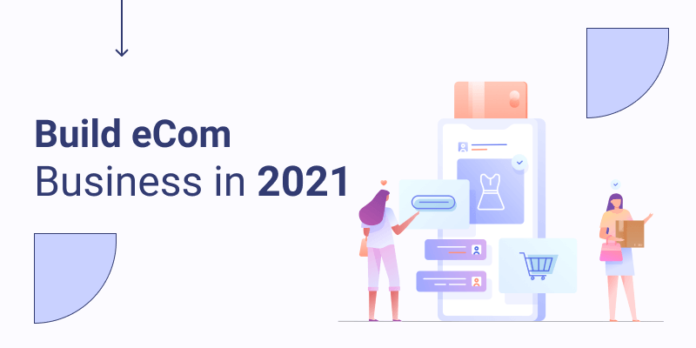The COVID-19 pandemic has made many businesses focus on online engagements to ensure continuity of operations and the safety of customers and employees. Entrepreneurs are considering launching their businesses online instead of ordinary physical establishments.
Having a good digital store can lead to a successful e-commerce business. Building an e-commerce business requires hard work and dedication because it involves making critical decisions at the right time. Here are ways to build a successful e-commerce business.
Be dedicated as you would in a physical store
Using a different medium to run a business does not mean changing the way of thinking. All you need to do is to have a business idea and convert it into a digital platform. Think of things like creating awareness about the existence of products and services, creating a business plan, identifying the target customers, and so on.
Rather than having a physical address, consider how people will be searching for you online and set up an online store. Search for relevant tips that can help you to optimize online listings, including the online directory. Make the efforts regarding how to connect with customers as you would with a physical store.
Your online store will be hosted on infrastructure optimized for security, speed, and scalability. Think of how your plugins and site will be updated so that you can have security benefits for your store.
Focus on capital allocation
Taking the right approaches to do e-commerce business is vital for its success. One of the key aspects of success is having a capital allocation strategy where you engage people with the right skills. Optimal capital allocation does not mean going for expensive options.
According to a leading essay writing service UK, avoid tying your capital on expensive websites or mobile apps unless customers indicate that they need such features. Optimal inventory control is also important to ensure that the inventory matches existing demand. The bottom line is to start small and continue making changes based on customer and business needs.
Allocate capital in areas with potential growth opportunities and be guided by customer expectations. Depending on your ability and the business growth level, you can use data visualization software to identify where more investment may be needed. Confirm that the long-term strategy and management incentives are aligned.
Identify and grow an online audience
The success of an e-commerce business depends on enthusiasm and passion for the niche audience. The growth of the e-commerce market is characterized by increased competition where similar brands are saturated in the market.
If you are running a small business, focus on how you are going to reach and meet the expectations of your target audience instead of competing with large established firms. Before you start selling, identify your unique selling points and the market niche.
Your niche needs to be specific to product offerings and focused on relevant demographics such as age, location, and social status. Instead of selling everything to everyone, tailor your offerings to a particular audience. A niche goes hand-in-hand with success because:
- It reduces the advertising costs. You can achieve a great return on investment with minimal advertising. It increases your profit margin in return. The transaction cost also affects your profit. You can calculate it using online seller tools.
- Higher-priced products. Niche products are not produced in large quantities and they may tend to cost more. Because of that, you can offer them at a higher price and maximize returns
- Attract loyal customers. All products have a loyal customer base, especially because of the niche aspect.
- It can result in a successful trend. If your product is placed in a wave of a trend, it can attract more potential customers.
Use a relevant distribution channel

When you decide to establish an e-commerce business, think about product distribution. Ask yourself how you want to reach your audience. The mix of sales channels depends on your brand and the target customers.
The distribution channel depends on the product type, brand advertising, pricing, and product positioning. Defining a distribution strategy requires you to identify the customers’ needs and to find out if they need training about the product or service. You may also need to consider the current shopping experience and the way to improve it.
Such considerations may help you to assess your current business positioning and evaluate the kind of distribution policy you need. For your e-commerce store, you need to leverage digital advertising, social network ads, search engine marketing, email marketing, SEO optimization, and more.
The distribution channels must improve user experiences and add value to customers. This depends on how and where they prefer to shop and the information they need before they are convinced. Ensure that the distribution is appropriate and viable and provides room for scaling as per the demand.
Leverage content creation
One of the most important things to consider for a successful e-commerce business is content creation. In addition to building the online site, build an email list and send informative and timely emails to your audience. Have newsletters containing discounts, offers, and other useful information. Email marketing allows you to create present or potential future buys.
Email marketing outcomes depend on how best you can build a subscriber list for lead generation. See new email subscribers as potential future customers. Your email marketing planning should therefore include an audience-building strategy. Start by creating a compelling and engaging opt-in form for the email newsletter.
You can include the email opt-in form on your website to allow you to add subscribers to the newsletter list. Double opt-in forms are a good option because they can collect subscribers from the sign-up forms and send confirmation emails for validation of contact information. To increase the sign-up rates, offer incentives such as quiz results and discount codes to the email list subscribers.
Conclusion
Building a successful e-commerce business requires dedication and patience as it involves making sensitive decisions. When you view an online store in the same way you view a physical store in terms of making efforts and allocating resources, you can be successful. Identifying your target audience and deciding how to reach them is also a pathway to success. When building the business, you may learn a lot about choosing a product and evaluating its viability.








